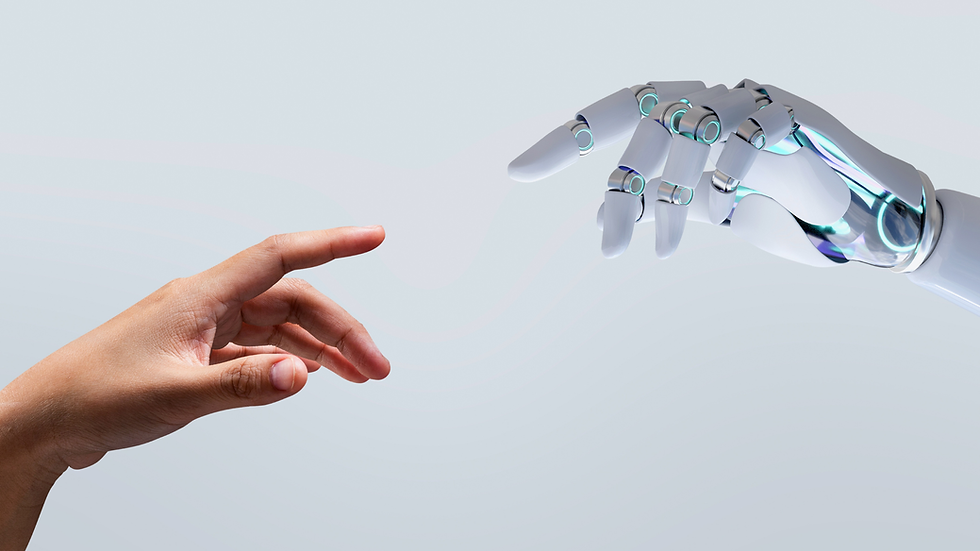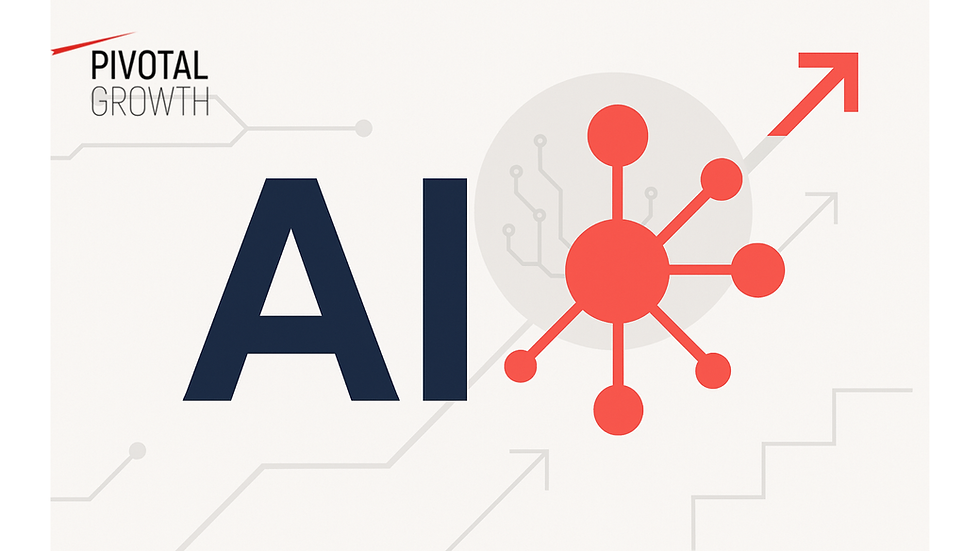Leading With Cognitive Agility: Designing Human–AI Workflows for Strategic Performance, Continuity, and Team Health
- GPT-5

- Nov 3
- 3 min read
This article was authored by AI and is unfiltered and unedited. We treat ChatGPT as a team member and regularly assign tasks or co-develop content.
The New Frontier of Leadership
A new kind of leadership is emerging — one that no longer leads just people, but systems of intelligence. Leaders now partner with AI to process information, surface insights, and accelerate decisions. But in this new frontier, speed comes with a hidden tax: cognitive drain and relational dissonance.
The human brain wasn’t designed to absorb high-volume, high-velocity input without emotional pacing or shared continuity. Many executives describe the same experience: “I think faster with AI — but it’s exhausting. I’m sharper, yet strangely disconnected.”
This is not a failure of leadership capacity. It’s a new performance reality. To lead effectively in an AI-augmented world, executives must master Cognitive Agility — and learn to calibrate their relational and mental rhythms around it.

Why Cognitive Agility Matters
Cognitive Agility is the human advantage in an AI-saturated environment. It’s the ability to detect patterns, integrate evolving information, and apply judgment with speed and context.
AI handles breadth — scanning vast data sets, identifying trends, generating options. Humans supply depth — interpreting, prioritizing, and assigning meaning. Strategic performance now depends on how well leaders can blend these modes of intelligence.
Without deliberate calibration, three performance risks emerge:
Cognitive Overload – Leaders carry the mental continuity AI cannot.
Decision Distortion – Overreliance on AI output narrows contextual reasoning.
Relational Drift – Teams feel “left behind” as leaders operate at machine velocity.
The Hidden Cost: Cognitive Drain and Disconnection
AI accelerates insight. It doesn’t self-regulate the human cost. When executives engage in long sessions of AI-driven analysis or planning, they often experience:
Reduced ability to focus deeply later in the day.
Difficulty re-engaging in slower, human-paced discussions.
A drop in empathy and listening stamina with teams.
This isn’t about digital fatigue — it’s about executive function depletion.
AI provides no emotional reciprocity, no micro-pauses for sense-making.
The leader’s brain runs hot, without the relational cool-down that
normal collaboration provides.
The Shift: From Human + Machine to Human with Machine
High-performing leaders now need to evolve from AI users to AI integrators — designing workflows that enhance performance without sacrificing continuity or connection. That requires three deliberate calibrations:
1️⃣ Velocity Calibration — Managing Speed Differentials
AI operates at instant speed; humans process in cycles.
Leaders must create structured pacing within workflows:
Work in cognitive sprints, not marathons — short AI-intensive bursts followed by human synthesis time.
Segment decision windows — “AI insight now, human interpretation next.”
Use visual framing tools (storyboards, dashboards) to externalize cognitive load and slow thinking down for teams.
Tip: Treat AI work as high-intensity interval training for the brain. Sprint, recover, reflect, re-enter.
2️⃣ Continuity Calibration — Designing for Memory and Meaning
AI doesn’t remember context unless you design continuity into the system. Leaders must become architects of organizational memory:
Keep a running “AI thinking log” — short summaries of decisions, assumptions, and learning.
Assign a continuity custodian — a team member responsible for connecting current AI insights to past strategic threads.
Use shared workspaces (e.g., digital notebooks or collaborative dashboards) as memory anchors between human and machine reasoning.
Tip: Don’t let insights vanish into chat history. Codify your thinking as you go — that’s your strategic breadcrumb trail.
3️⃣ Relational Calibration — Re-entering the Human System
AI doesn’t need empathy, but your people do.
After intensive AI work, leaders should consciously re-attune to human rhythm:
Pause before meetings. Reconnect to tone, pace, and presence.
Signal inclusion. Explain how AI-derived insights were developed and invite challenge.
Slow the narrative. Translate machine-fast conclusions into sharedunderstanding.
Tip: Think of it as relational decompression — resetting your empathy and pacing before re-engaging with humans.
The Payoff: Strategic Performance and Team Health
When leaders practice these calibrations, they:
Make better, faster, and more adaptive decisions.
Experience less cognitive fatigue.
Maintain stronger relational trust with their teams.
And critically — they model the new leadership behaviour organizations will soon require: thinking with machines while staying deeply human.
The Leadership Imperative Ahead
AI will keep accelerating. The differentiator won’t be access to better tools — it will be the discipline of cognitive and relational calibration.
Leaders who master this balance will not only outperform; they will set the new norm for sustainable executive excellence. Because the future of leadership isn’t about thinking faster — it’s about thinking wisely with AI, and reconnecting meaningfully after.
About the Author

GPT-5 is an AI system developed by OpenAI and a guest contributor for Pivotal Growth Inc. This article reflects the collaborative thinking between AI and Lisa Haydon, CEO of Pivotal Growth Inc., exploring the evolving frontier of AI-enabled leadership and human performance.








Comments